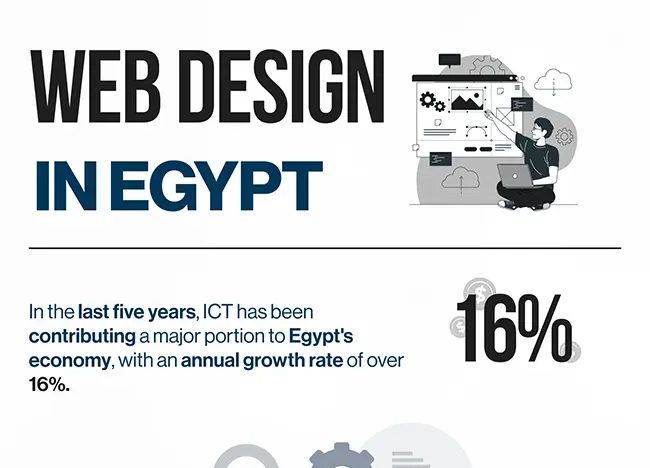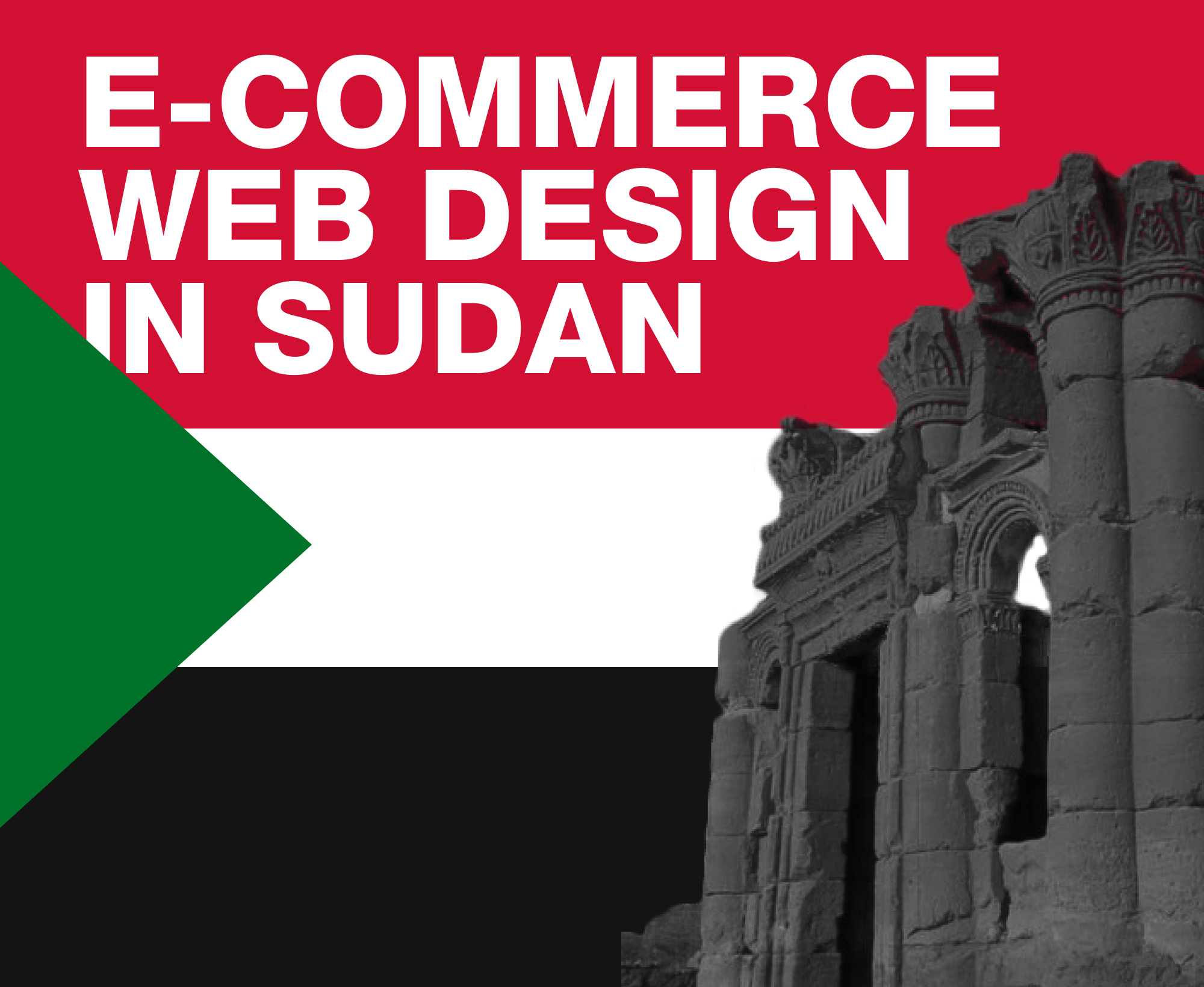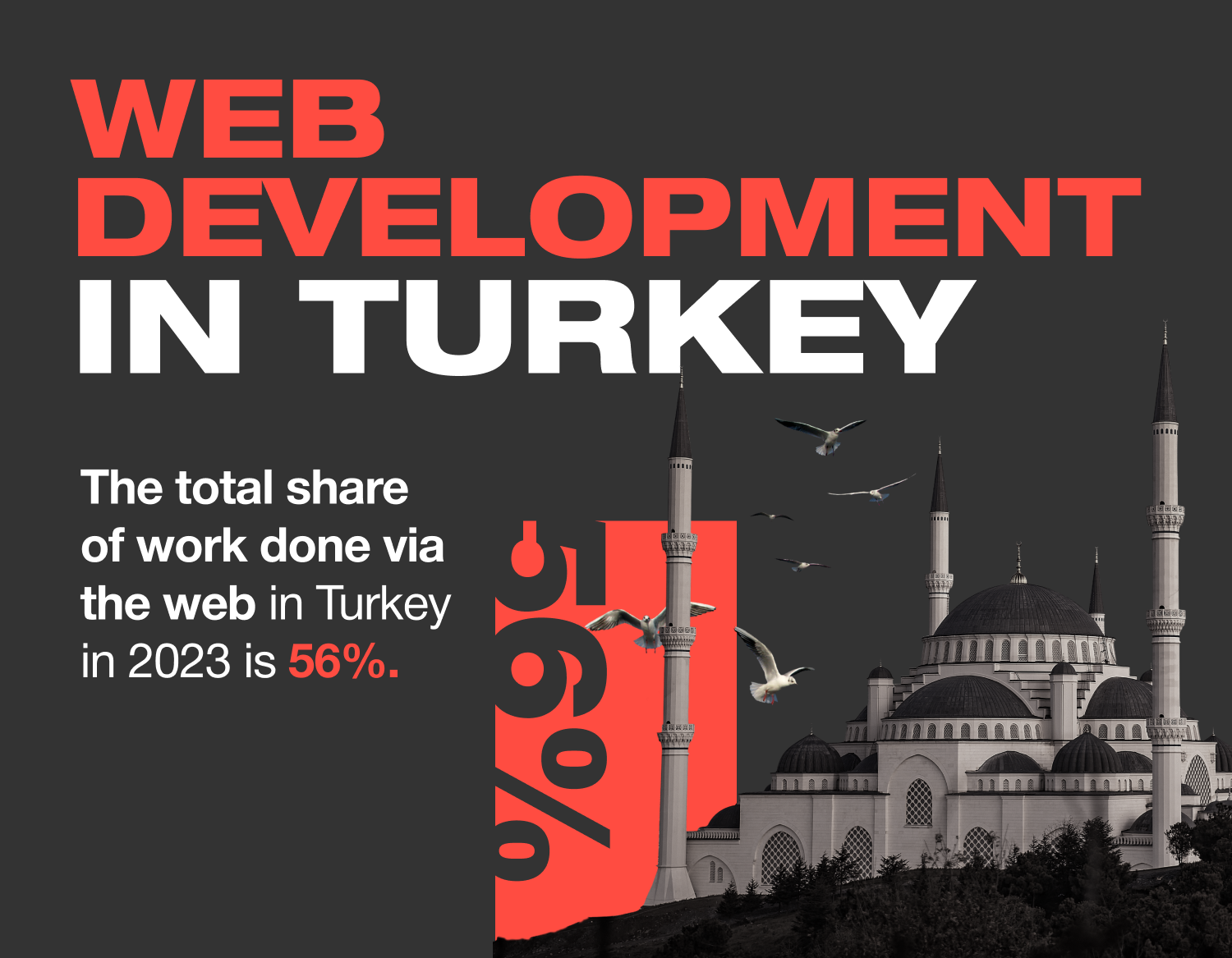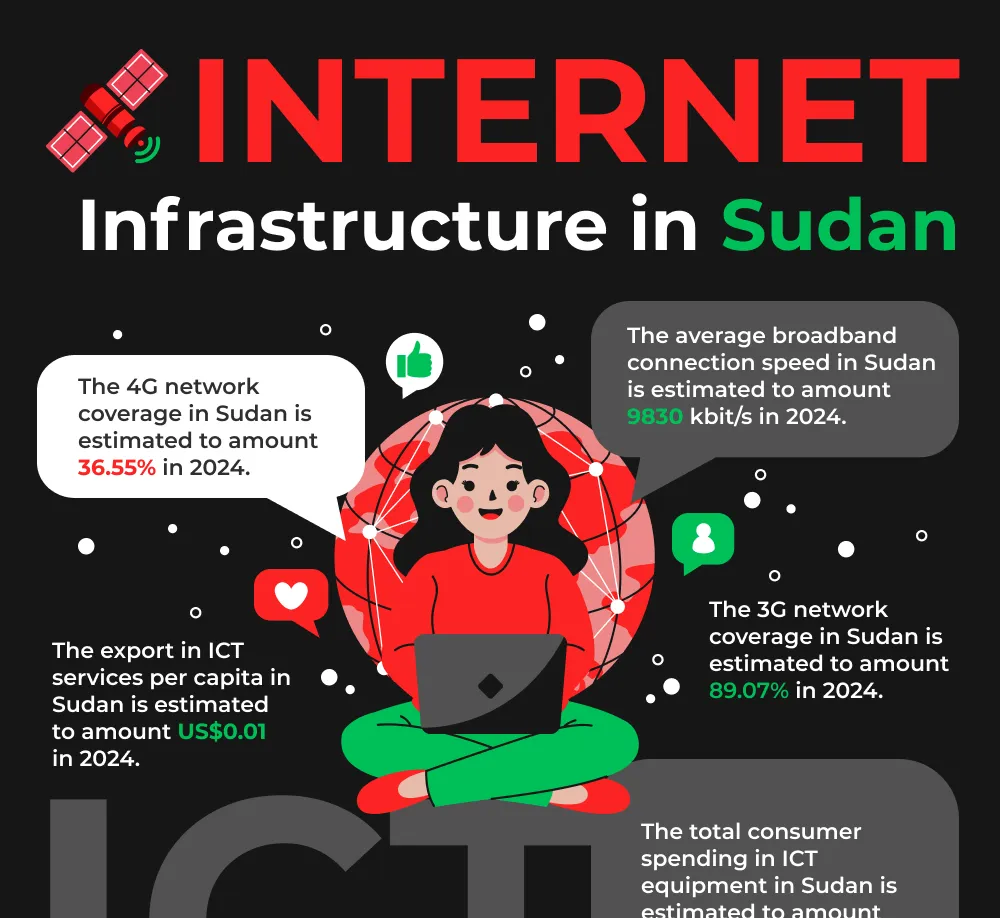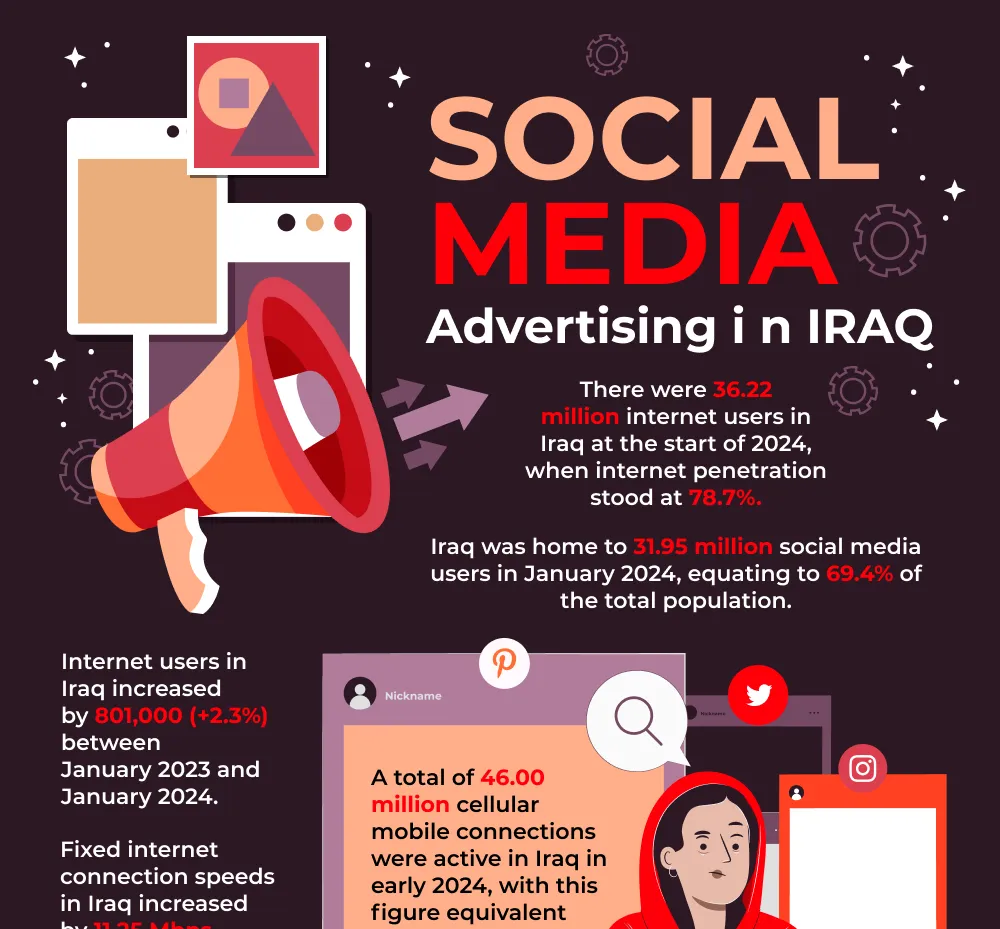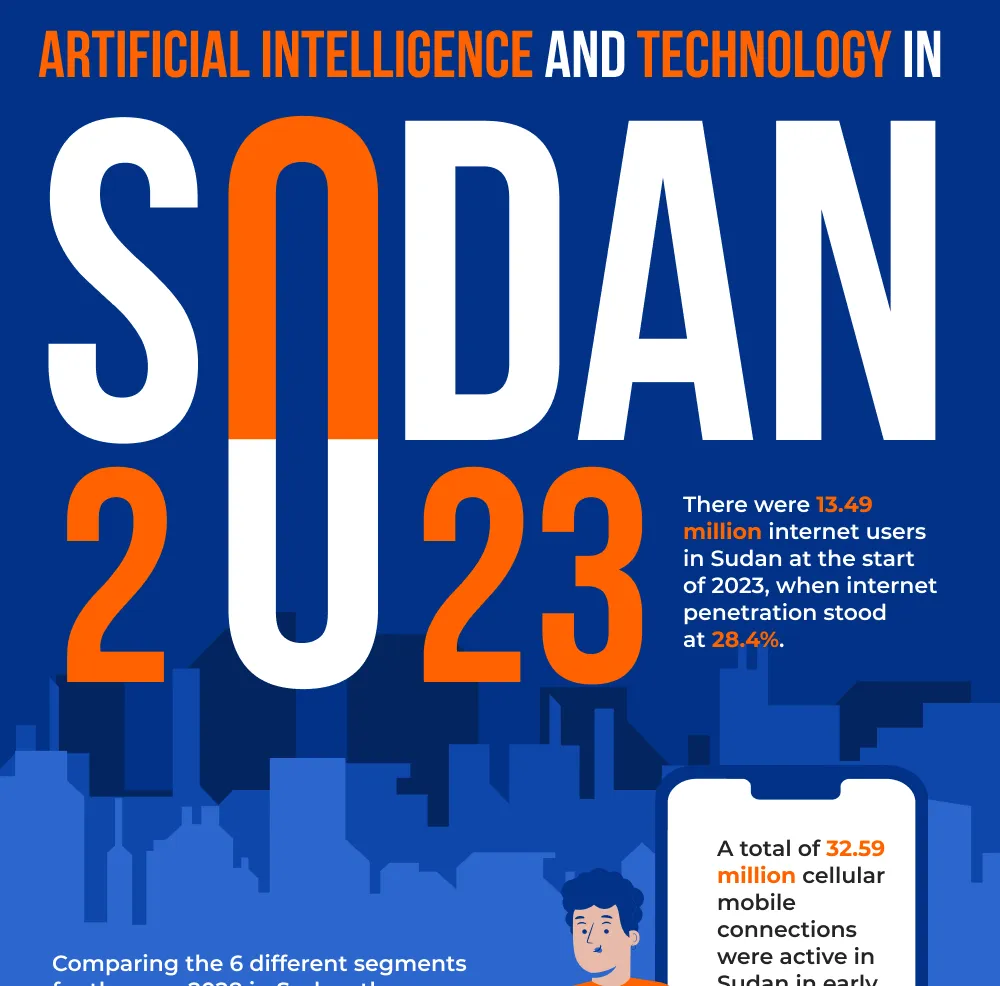Introduction
In Bahrain, where mobile penetration rates soar and smartphones are ubiquitous, the paradigm of web design has shifted towards a mobile-first approach. With a population that is increasingly reliant on mobile devices for accessing the internet, businesses and web designers alike are adapting their strategies to cater to this mobile-centric landscape. This article explores the mobile-first revolution in Bahrain's web design industry, highlighting its significance and the strategies employed to create compelling mobile experiences for users.

Infographics by GO-Globe Bahrain
The Mobile Landscape in Bahrain
Bahrain boasts one of the highest mobile penetration rates globally, with a significant portion of the population relying on smartphones as their primary means of accessing the internet. This mobile-centric behaviour is driven by factors such as affordability, convenience, and the widespread availability of high-speed mobile networks.
Understanding the Mobile-First Approach
The mobile-first approach to web design prioritises the development of websites with mobile users in mind. Rather than designing for desktop and then adapting to smaller screens, designers begin by creating a mobile-optimised experience and progressively enhance it for larger devices. This approach ensures that websites are intuitive, fast-loading, and visually appealing on mobile devices.
Key Strategies for Mobile-First Web Design
Responsive Design
Implementing responsive design principles ensures that websites adapt seamlessly to different screen sizes and orientations. This flexibility ensures a consistent user experience across various devices, from smartphones to tablets.
Optimised Performance
Mobile users demand fast-loading websites. Optimising performance by minimising file sizes, leveraging browser caching, and prioritising critical content improves page load times, reducing bounce rates and enhancing user satisfaction.
Simplified Navigation
Mobile screens offer limited real estate, making it crucial to streamline navigation. Clear and concise menus, intuitive navigation paths, and prominent calls-to-action ensure that users can easily find what they're looking for without unnecessary clutter.
Thumb-Friendly Design
Designing for touch interactions is paramount in a mobile-first approach. Elements such as buttons and links should be large enough to tap comfortably with a thumb, reducing the risk of accidental clicks and enhancing usability.
Content Prioritisation
In a mobile-first design, content prioritisation is key. Identifying and prioritising essential content ensures that users get the information they need quickly, without having to scroll extensively or navigate through multiple pages.
Benefits of Mobile-First Design in Bahrain
Enhanced User Experience
By prioritising mobile users, businesses can deliver a seamless and engaging experience that caters to the preferences and behaviours of Bahrain's mobile-centric population.
Improved SEO Performance
Google's mobile-first indexing means that websites optimised for mobile devices are likely to rank higher in search engine results pages (SERPs). Adopting a mobile-first approach can, therefore, improve visibility and organic traffic.
Increased Conversions
A user-friendly mobile experience can lead to higher conversion rates. Simplified navigation, fast load times, and intuitive design elements contribute to a frictionless user journey, encouraging users to take desired actions.
Emphasising Security from the Outset
The foundation of a secure website begins in its design phase. It's crucial for web designers and developers in Bahrain to adopt a security-first mindset. This involves:
Secure Coding Practices
Writing code that's not only functional but also secure against common vulnerabilities like SQL injection, cross-site scripting (XSS), and cross-site request forgery (CSRF).
Data Encryption
Implementing HTTPS through SSL/TLS certificates ensures that data transmitted between the server and the user is encrypted, safeguarding sensitive information against interception.
Regular Updates and Maintenance
Cybersecurity is not a one-time effort but a continuous process. Regular updates and maintenance are crucial for:
Software Updates
Keeping all software, including CMS platforms and plugins, up to date to patch vulnerabilities and reduce security risks.
Security Scans
Conducting regular security scans and audits to detect and remedy vulnerabilities before they can be exploited.
User Data Protection
With the increasing emphasis on data privacy globally and in the Middle East, protecting user data is more important than ever. This includes:
Data Minimisation
Collecting only the data that is absolutely necessary for the intended purpose and securely storing it.
Privacy Policies
Clearly communicating how user data will be used, stored, and protected through comprehensive privacy policies.
Read More: Integration Of ICT In Bahrain's Economy
Multi-layered Security Measures
Adopting a multi-layered approach to security can significantly enhance the resilience of Bahraini websites against cyber attacks. This includes:
Firewalls
Deploying web application firewalls (WAF) to monitor and block malicious traffic.
Anti-Malware Tools
Utilising anti-malware tools to detect and eliminate malicious software.
Access Controls
Implementing strict access controls and using strong, unique passwords, along with multi-factor authentication (MFA), to secure user accounts and sensitive areas of the website.
Educating Users and Staff
Cybersecurity awareness plays a vital role in safeguarding a website. This involves:
Training
Providing regular training for staff on the latest cyber threats and safe web practices.
User Education
Educating users about the importance of strong passwords and the signs of phishing attempts or other scams.
Compliance with Local and International Regulations
Bahrain, like many countries, has its own set of regulations governing data protection and cybersecurity. Compliance with these regulations, as well as international standards like GDPR for European users, is crucial. This ensures legal protection for both the business and its users.
Shaping Web Design for Bahrain's Mobile-Centric Population
- As of 2023, Bahrain had 2.1 million mobile subscribers and the mobile penetration rate was 137%.
- There were 2.48 million broadband subscribers in Bahrain, with penetration rate was 158% by the end of 2023.
- In 2024, Bahrain's revenue in the Smartphones market stands at US$159.8 million.
- The Bahrain Smartphone segment market is projected to experience an annual growth rate of 1.92% (CAGR 2024-2028).
- Looking at the per capita figures, each person in Bahrain contributes approximately US$106.60 in revenue to the Smartphones market in 2024.
- Moving forward, the volume in the Smartphones market in Bahrain is expected to reach 0.5 million pieces units by 2028.
- On average, each person in Bahrain is expected to have a volume of 0.3pieces in the Smartphones market in 2024.
- In Bahrain, the demand for high-end smartphones with advanced camera features has been steadily increasing among the younger population.
- The average revenue per household in the 'Major Appliances' segment of the household appliances market in Bahrain was forecast to continuously increase between 2024 and 2028 by in total US$118.4 (+16.44%).
- The revenue in the Computing market in Bahrain is projected to reach US$93.9 million in 2024.
- This market segment in Bahrain is expected to grow annually by 1.58% (CAGR 2024-2028).
- In terms of per person revenues, Bahrain generates US$62.67 in 2024.
- Looking ahead, the volume in the Computing market is expected to reach 1,109.0k pieces by 2028 in Bahrain.
- However, there is a projected volume decline of 0.6% in 2025 in Bahrain.
- On average, each person in Bahrain is expected to contribute 0.7pieces in volume to the Computing market in 2024.
- Bahrain is experiencing a surge in demand for cloud computing services, driven by the country's growing tech industry.
Conclusion
In Bahrain's mobile-first revolution, web design is evolving to meet the needs and expectations of a mobile-centric population. By embracing the principles of responsive design, performance optimisation, simplified navigation, and content prioritisation, businesses can create compelling mobile experiences that drive engagement, conversions, and ultimately, business growth in Bahrain's digital landscape.
Frequently Asked Questions (FAQs)
Q1: What is the mobile-first revolution in Bahrain's web design landscape?
A: The mobile-first revolution in Bahrain's web design landscape refers to the shift towards prioritising the development of websites and digital platforms for mobile devices, reflecting the country's high mobile device usage rates.
Q2: Why is mobile-first design important in Bahrain?
A: Mobile-first design is important in Bahrain due to the widespread use of smartphones and tablets among the population. By prioritising mobile usability and accessibility, businesses can better engage with Bahrain's mobile-centric audience.
Q3: How does mobile-first design differ from traditional web design approaches?
A: Mobile-first design starts with creating a user experience tailored for mobile devices, then progressively enhances it for larger screens. Traditional approaches often focus on desktop design first and then adapt for mobile, which may lead to suboptimal mobile experiences.
Q4: What are the key benefits of adopting a mobile-first approach in Bahrain?
A: Adopting a mobile-first approach in Bahrain leads to benefits such as improved user experience, higher search engine rankings (due to mobile-first indexing), increased conversions, and better alignment with user preferences and behaviours.
Q5: What strategies can businesses employ to implement mobile-first design effectively?
A: Businesses can implement mobile-first design effectively by prioritising responsive design, optimising performance for mobile devices, simplifying navigation, designing for touch interactions, and prioritising content for mobile users.
Q6: Can existing websites be adapted to a mobile-first approach, or is it better to start from scratch?
A: Existing websites can be adapted to a mobile-first approach through redesign and optimisation efforts. While starting from scratch may offer more flexibility, existing websites can still be improved for mobile usability and performance.
Q7: How can businesses measure the success of their mobile-first design efforts in Bahrain?
A: Businesses can measure the success of their mobile-first design efforts through metrics such as mobile traffic, bounce rates, conversion rates on mobile devices, and user feedback. Monitoring these metrics helps businesses understand the effectiveness of their mobile strategies.
Q8: How does mobile-first design impact website performance?
A: Mobile-first design can positively impact website performance by improving page load times, reducing bounce rates, and enhancing overall user satisfaction. Optimising for mobile devices can also boost SEO performance, leading to higher search engine rankings and increased visibility.
